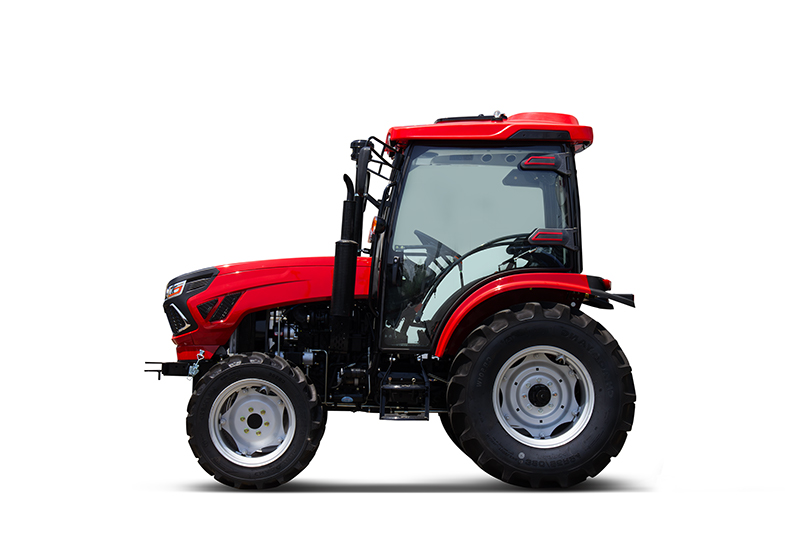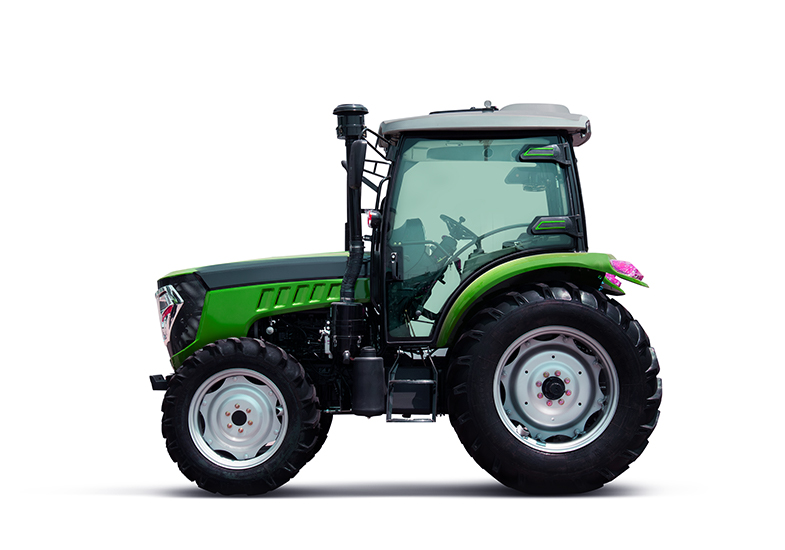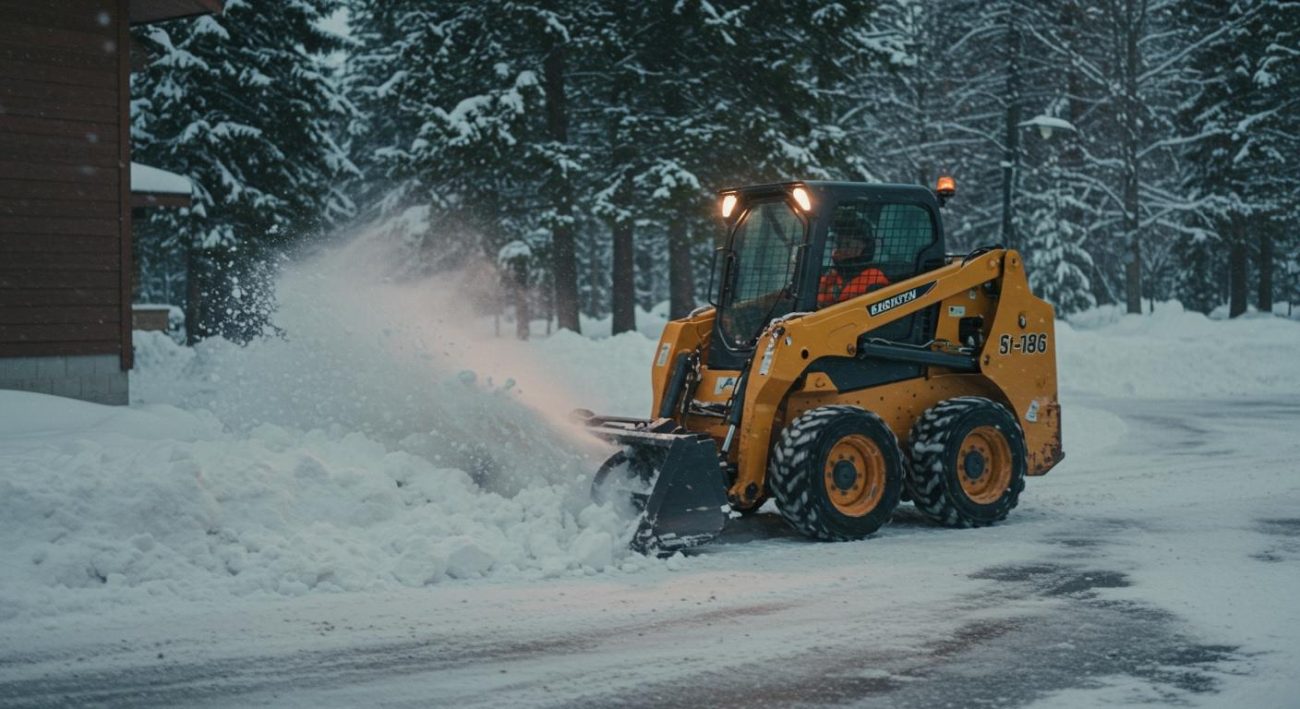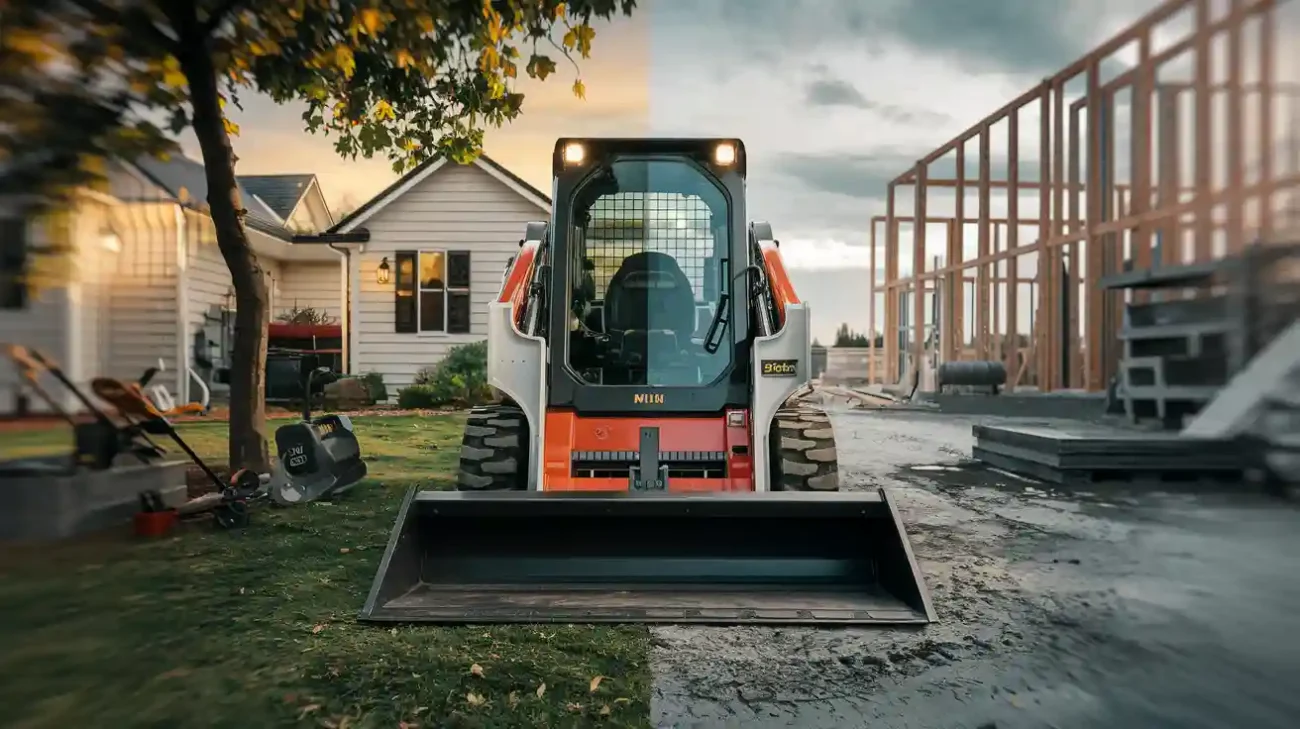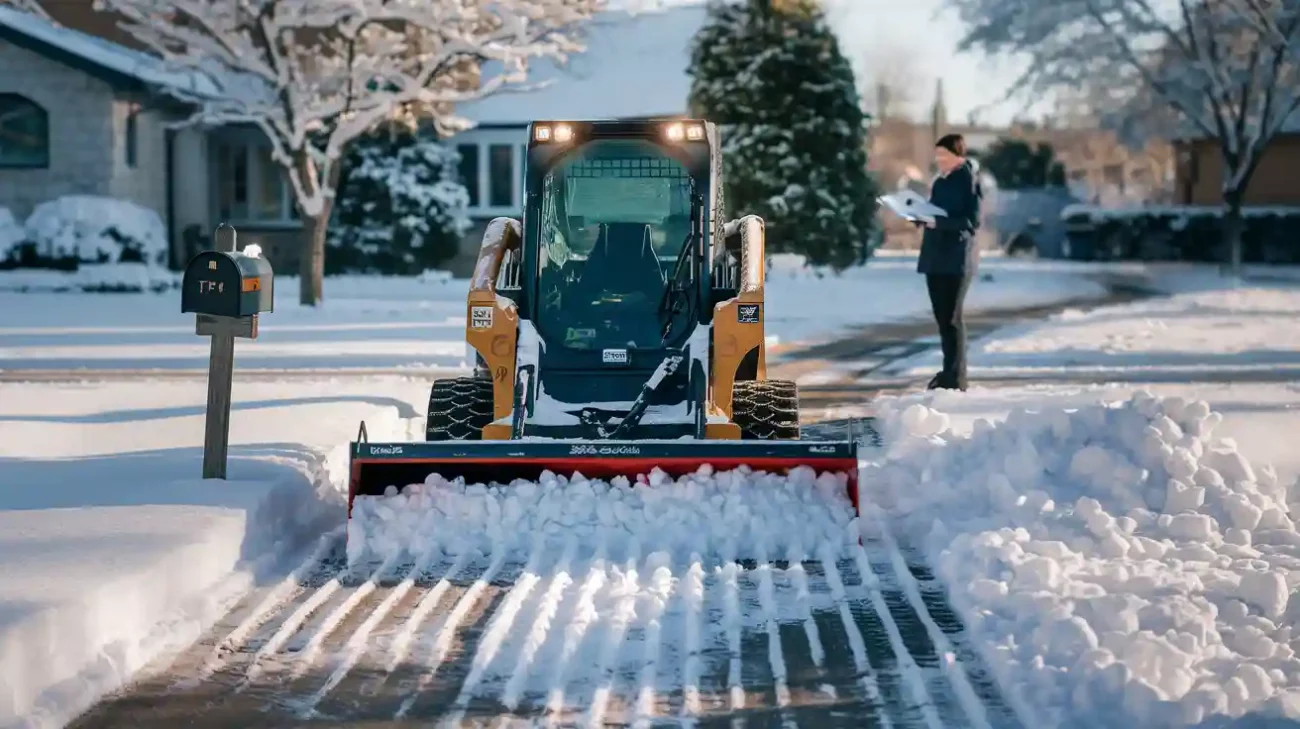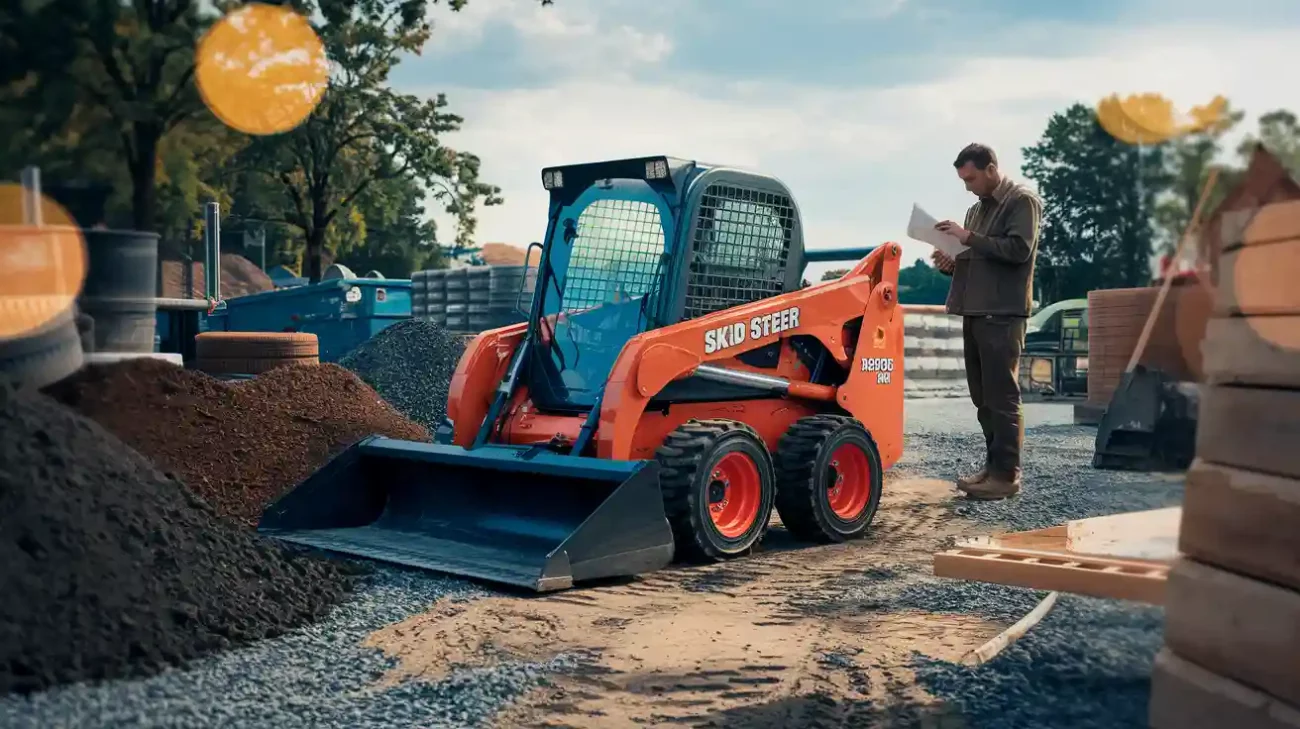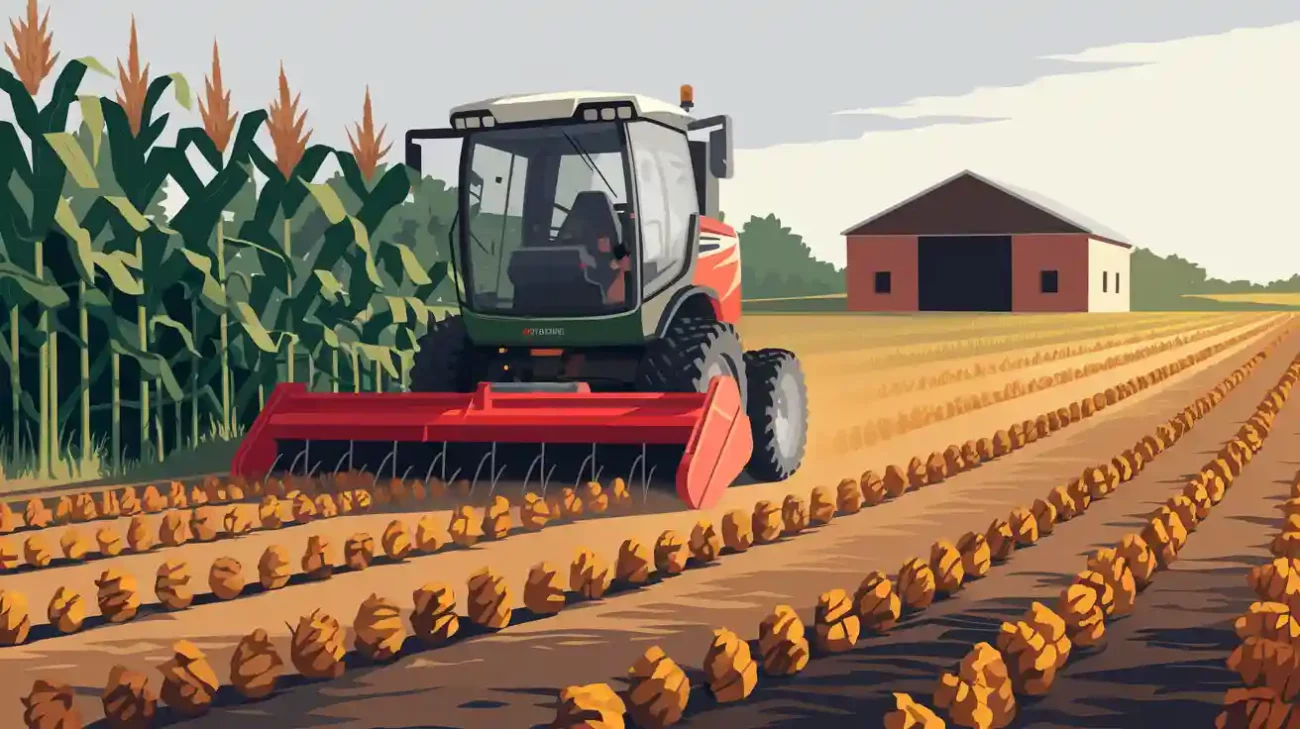Ever thought about which mini loader is right for you? Should you pick wheels or tracks for your project? Imagine your work area after it rains a lot. Will wheels or tracks work better in the mud? It is important to conduct a loader comparison. The ground, price, care, and how well it works all matter. DeepKron understands small machines very well.
Key Takeaways
Look at your job site. If the ground is muddy or bumpy, track loaders have better grip. Track loaders also stay steady on rough ground. If the ground is hard and flat, wheel loaders move faster. Wheel loaders work better and save time on smooth surfaces.
Check how long each loader lasts. Also think about how much care they need. Wheel loaders last longer on hard ground. Track loaders work best on soft ground. Track loaders are stronger in muddy places.
Think about what your project needs. Track loaders are good for soft places like lawns. Wheel loaders are better for lifting heavy things on paved ground. Pick the loader that fits your main jobs.
Loader Comparison: Key Differences

Quick Overview
When you compare loaders, you want to know what makes wheel and track mini loaders different. You may ask which one helps you finish work faster or saves money over time. DeepKron knows that picking the right loader can make your job easier.
Wheel mini loaders use articulated steering. This lets you turn smoothly and move quickly on hard, flat ground. You get to drive faster and see better from the cab. These loaders work best in places like paved lots or busy building sites. Their tires carry heavy loads and move fast, so you can do more work in less time.
Track mini loaders spread their weight over wide tracks. This helps you work on soft, muddy, or snowy ground without sinking or getting stuck. Tracks give you better grip and balance on hills or rough ground. Track loaders move slower than wheel loaders, but they go places wheels cannot. They also hurt the ground less, which is good if you want to protect lawns or finished areas.
Think about how long each loader lasts. Wheel loaders usually last about 10 years or up to 12,000 hours. Track loaders last around 6,000 to 7,000 hours before needing a rebuild. If you work on soft ground a lot, track loaders last longer because their tracks handle rough ground better. On hard ground, wheel loaders last longer because their tires do not wear out as fast.
Experts say wheel loaders work best on paved or hard ground. Track loaders are better in loose, wet, or rough places. Track loaders float better on soft ground, so you can keep working after heavy rain. This loader comparison shows each type has its own differences and advantages for your job site.
Tip: Think about your main job site. Is it muddy or dry? Is it flat or hilly? Your answer will help you pick the loader with the most advantages for your needs.
At-a-Glance Table
Feature | Wheel Loader (Skid Steer) | Compact Track Loader |
|---|---|---|
Steering Mechanism | Articulated, smooth turns | No central steering, operates differently |
Weight Distribution | Four points (tires) | Spread over wide tracks |
Terrain Handling | Best on solid, paved, or high-traffic areas | Excels on mud, snow, and uneven ground |
Speed | Faster travel | Slower, but better in tight spaces |
Visibility | Higher cab, better view | Lower center of gravity, less visibility |
Lifespan | 6,000–7,000 hours | |
Ground Impact | More wear on tires, higher ground pressure | Less ground disturbance, better flotation |
Typical Applications | Heavy loads, construction, paved sites | Residential, landscaping, hilly terrain |
Advantages | Speed, visibility, cost-effective on hard ground | Traction, stability, less site damage |
You can find new technology in both types. Some loaders have remote controls, better cameras, and easier ways to add attachments. These features give you more advantages, like safer use and less time fixing problems. When you compare loaders, look for these upgrades to get the most from your machine.
If you want to buy a loader, you have many ways to pay. Some companies offer 0% financing for up to 60 months, cash back deals, or no payments for 90 days. These choices help you get the loader with the most advantages for your budget.
Wheeled Skid Steers by DeepKron

Features
DeepKron’s wheeled skid steers are easy to spot. They fit into small spaces. You can use them in tight yards or busy sites. The joystick controls are simple to use. Even new users can start working fast. You can change attachments quickly. This helps you get ready for many jobs.
Here is a table that shows what makes DeepKron’s wheeled skid steers special:
Feature | Description | What Makes It Stand Out |
|---|---|---|
Compact Design | Fits into small spaces with a four-wheel setup | Great for tight job sites |
Ease of Use | Responsive joystick controls for simple operation | Easier than many other skid steer loaders |
Versatility | Works with many attachments | More adaptable than most competitors |
Gentle on Ground | Low ground pressure to protect lawns and gardens | Less damage than other wheeled models |
Efficient Engine | Meets EPA standards for efficiency | More eco-friendly than some machines |
Tip: If you want a machine that is simple to drive and kind to your yard, DeepKron’s wheeled skid steers are a good choice.
Typical Uses
Wheeled skid steers can do many jobs. They help you move heavy things. You can clear land or break up concrete. Here are some common ways people use DeepKron’s wheeled models:
Demolition jobs inside or outside buildings
Roadwork, like spreading gravel or fixing drains
Digging, trenching, and getting sites ready
Loading and moving things around your site
Landscaping, such as clearing brush, grading, and mowing
Filling and leveling ground after digging
Wheeled skid steers are fast and flexible. They work well on busy construction sites or landscaping jobs. You can trust your DeepKron skid steer loader to handle hard work and keep your project going.
Compact Track Loader Options
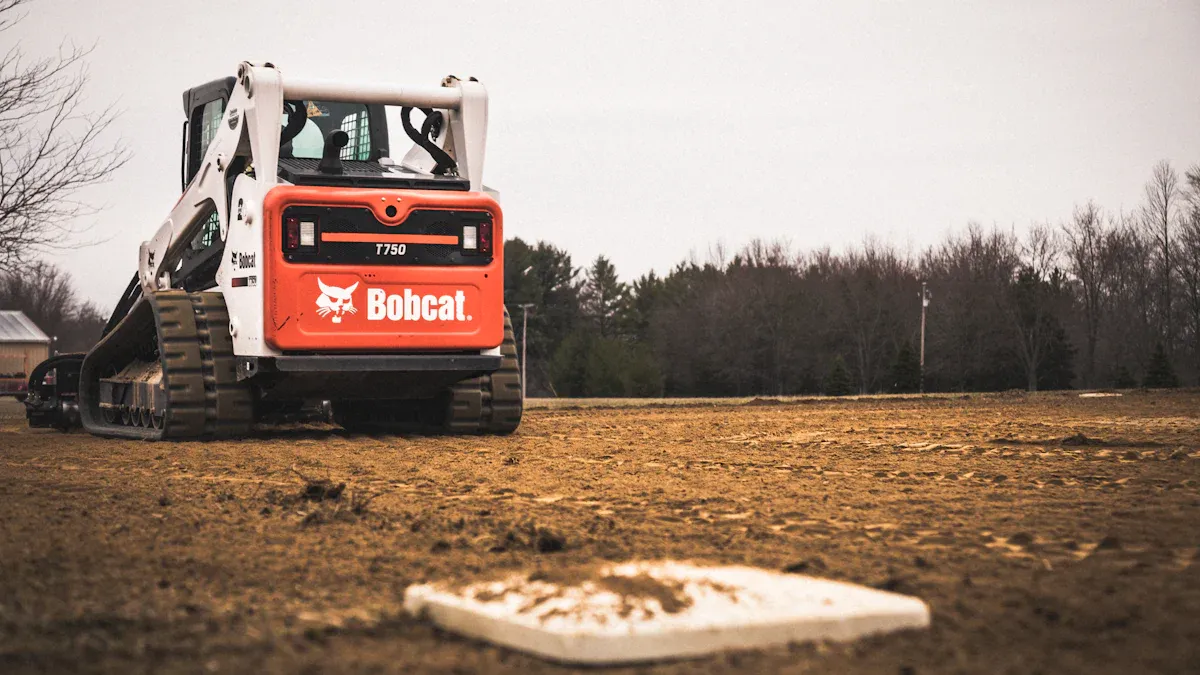
Features
If you want a machine that handles tough ground, you should look at a compact track loader. These tracked machines use wide rubber tracks instead of wheels. You get better grip and balance on soft, muddy, or snowy ground. Tracked skid steers spread their weight, so you do not sink or damage the surface. You can work on hills or rough spots without slipping.
You will notice that tracked skid steers have a lower center of gravity. This helps you stay safe when you drive on slopes. The cab gives you good protection from dirt and weather. You can switch attachments fast, so you can dig, grade, or move materials with ease. Tracked models also run quietly, which is nice if you work near homes or schools.
Tip: If your job site gets wet or has loose soil, tracked skid steers will keep you working when wheeled machines stop.
Typical Uses
Tracked skid steers help you finish many jobs in different industries. You can use compact track loaders for site prep, digging, and grading in construction. In landscaping, tracked machines move soil, dig trenches, and level ground. Farmers use tracked skid steers to move hay, feed, or fertilizer. You can clean barns or work in muddy fields.
Here is a table that shows how you can use compact track loaders in different industries:
Industry | Primary Use Cases |
|---|---|
Construction | Site preparation, excavation, grading, land clearing |
Landscaping | Material movement, trench digging, soil leveling |
Agriculture | Moving hay, feed, fertilizer, barn cleaning |
Grounds Maintenance | Snow removal, landscape upkeep |
You can also use tracked skid steers for snow removal or keeping parks neat. If you need to protect lawns or finished surfaces, tracked models leave less damage. You get more work done in places where wheels cannot go. Tracked skid steers give you the power and control you need for tough jobs.
Loader Comparison: Performance Factors
Terrain Suitability
When you compare loaders, the ground is very important. Tracks help you move in mud, snow, and soft dirt. They give you better grip and keep you steady on slippery ground. Wheel loaders work best on pavement or gravel. If the ground is wet or loose, tracks help you keep going.
Track loaders work well on rough ground and do not sink in wet places.
Look at this table to see how each loader works on different ground:
Terrain Type | Compact Track Loader Performance | Wheel Loader Performance |
|---|---|---|
Mud | Great grip on soft ground | Not as good |
Gravel | Stays steady and grips well | Works well on hard ground |
Pavement | Not great, might hurt the surface | Works very well |
Maneuverability & Speed
You need to turn and move easily, especially in small spaces. Tracks let you turn quickly and go around things. Mini track loaders are great for turning and staying steady, so they are good for tight spots and tricky ground. Wheel loaders go faster on hard ground but can have trouble in small areas.
If you need to move fast on a big, flat place, a wheel loader is quick. For small spaces, tracks help you control the loader better.
Lifting Capacity
Tracks spread out the weight, so you can lift heavy things without tipping over. Mini track loaders grip the ground and stay steady on hills. A wheel loader sits higher, so it might feel less steady on slopes.
Track loaders, like the C314, can lift a lot and keep you safe on bumpy ground.
Cost & Maintenance
When you look at loaders, think about how much they cost to rent and fix. Track loaders might cost more to rent, but they last longer on soft ground. Wheel loaders are easier to take care of on pavement.
Tracks can wear out faster on hard ground, but they save money by not hurting grass or finished areas.
Site Impact
Tracks protect soft ground. They spread out the weight, so you do not leave deep marks or damage. Wheel loaders can press down soil or scratch concrete.
Tracks are gentle on grass and good for yard work.
Wheels are better for roads and concrete, making less damage.
Comparing loaders helps you choose the best one for your job. Think about how easy it is to move, how steady it is, how much it can lift, and what you want to spend.
How to Choose Between the Two
Assess Your Job Site
You want to pick the best loader for your work. Start by looking at your job site. Every site is different. Some have soft, muddy ground. Others have hard pavement or gravel. You need to know what you are working with before you make a decision.
Here is a table to help you check the most important factors:
Factor | Considerations |
|---|---|
Primary Application | What kind of work do you do most? Is the ground usually soft or hard? |
Job Site Conditions | Are you working on finished surfaces or rough, natural ground? |
Transportation Requirements | Do you move your loader between sites often? How far do you travel? |
Operating Costs | Think about fuel, repairs, and fixing any ground damage. |
Versatility Needs | Do you need your loader to do many jobs in different places? |
Attachment Compatibility | Will you use special attachments? Are they easy to switch between loaders? |
If your site gets muddy or has lots of hills, a track loader choice makes sense. Track loaders spread their weight and keep you moving on soft ground. If you work on paved lots or need to travel between sites, a wheel loader is faster and easier to move.
Tip: Walk your site after it rains. If you see deep ruts or mud, tracks will help. If the ground stays firm, wheels might be better.
Match Loader to Project
Now, think about the work you do every day. Are you moving heavy loads on concrete? Do you need to protect lawns or finished turf? Each loader has its own strengths.
Let’s look at how different loaders fit different jobs:
Loader Type | Advantages in Sensitive Environments | Best Use Cases |
|---|---|---|
Track Loaders | Lower ground pressure, better flotation, enhanced stability | Muddy job sites, sensitive turf |
Wheel Loaders | More efficient on solid surfaces, but can cause more impact | Improved surfaces, frequent travel |
If you do landscaping or work on golf courses, you want to avoid tearing up the ground. Track loaders are gentle and steady. If you handle demolition or roadwork, a wheel loader gives you speed and power on hard surfaces.
Here’s a quick checklist to help you choose between the two:
Check your ground: Is it soft, muddy, or hilly? Go with tracks.
Need to move fast or travel far? Wheels are your friend.
Working on finished lawns or turf? Tracks protect the ground.
Doing heavy lifting on pavement? Wheels handle the load.
Want to switch attachments often? Both types work, but check what fits your jobs.
Remember, choosing the right equipment saves you time and money. It also keeps your job site safe and neat.
DeepKron’s Expert Tips
You do not have to decide alone. DeepKron offers a wide range of machines for every job. You can find both wheel loader and track loader options in their lineup. Here is a quick look at what DeepKron offers:
Loader Type | Models Available |
|---|---|
Skid Steer Loaders | S45, S65 |
Mini Loaders | DK250, DK300, DK500, DK700, DK800 |
Compact Track Loaders | A50, A65 |
Mini Excavators | DK12P, DK16, DK15P, DK16P, DK18A, DK25, DK26, DK32, DK35, DK65 |
Compact Tractors | T05, T07 |
Utility Tractors | T09-1608, T12-1608, T15-1608, T18-1608 |
DeepKron’s team can help you with choosing the right equipment. They know the details of each model. You can ask about attachments, fuel savings, or how to keep your loader running longer. If you are not sure about skid steer vs track loader, just reach out. DeepKron will guide you based on your job site and project needs.
Pro Tip: Always match your loader to your main job. If your work changes with the seasons, talk to DeepKron about a model that can handle both wheels and tracks.
Choosing the right equipment is not just about the machine. It is about your job, your site, and your goals. DeepKron makes it easy to get the support you need. You can trust their experience to help you make the best track loader choice or pick the perfect wheel loader for your work.
Choosing between wheel and track mini loaders comes down to your job site and needs. Here’s a quick look:
Wheel Loader | Track Loader | |
|---|---|---|
Terrain | Hard, flat surfaces | Muddy, uneven ground |
Cost | Lower upfront | Higher, but more versatile |
Maintenance | Easier, less costly | Needs more upkeep |
Checklist for your choice:
Know your main job site.
Think about long-term costs.
Check maintenance needs.
Ask DeepKron’s experts for advice.
Not sure? DeepKron’s team can help you pick the perfect loader for your work.
FAQ
What is the main difference between a wheel loader and a track loader?
Wheel loaders use tires and move fast on hard ground. Track loaders use rubber tracks and work better on soft or muddy ground.
Can I use the same attachments on both types of loaders?
Yes, you can use many of the same attachments. Just check that the attachment fits your loader’s model and size.
How do I know which loader is best for my job?
Look at your job site.
Think about the ground and weather.
Ask DeepKron’s team for advice if you are not sure.

